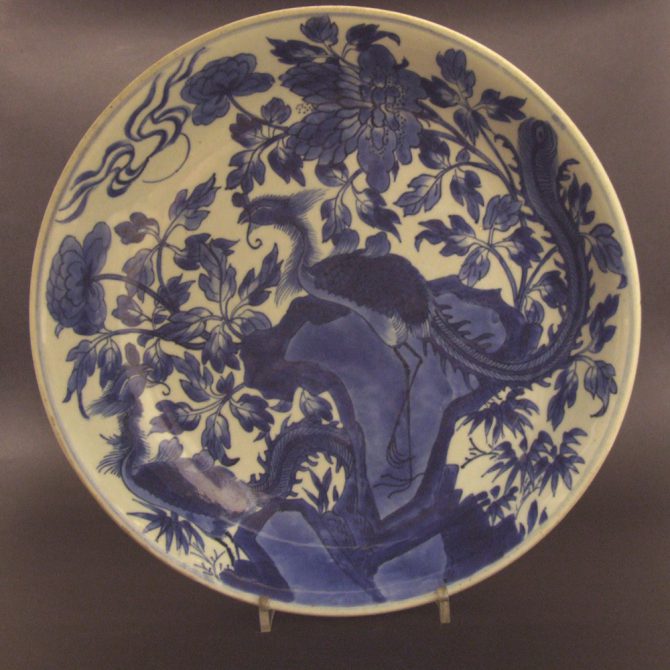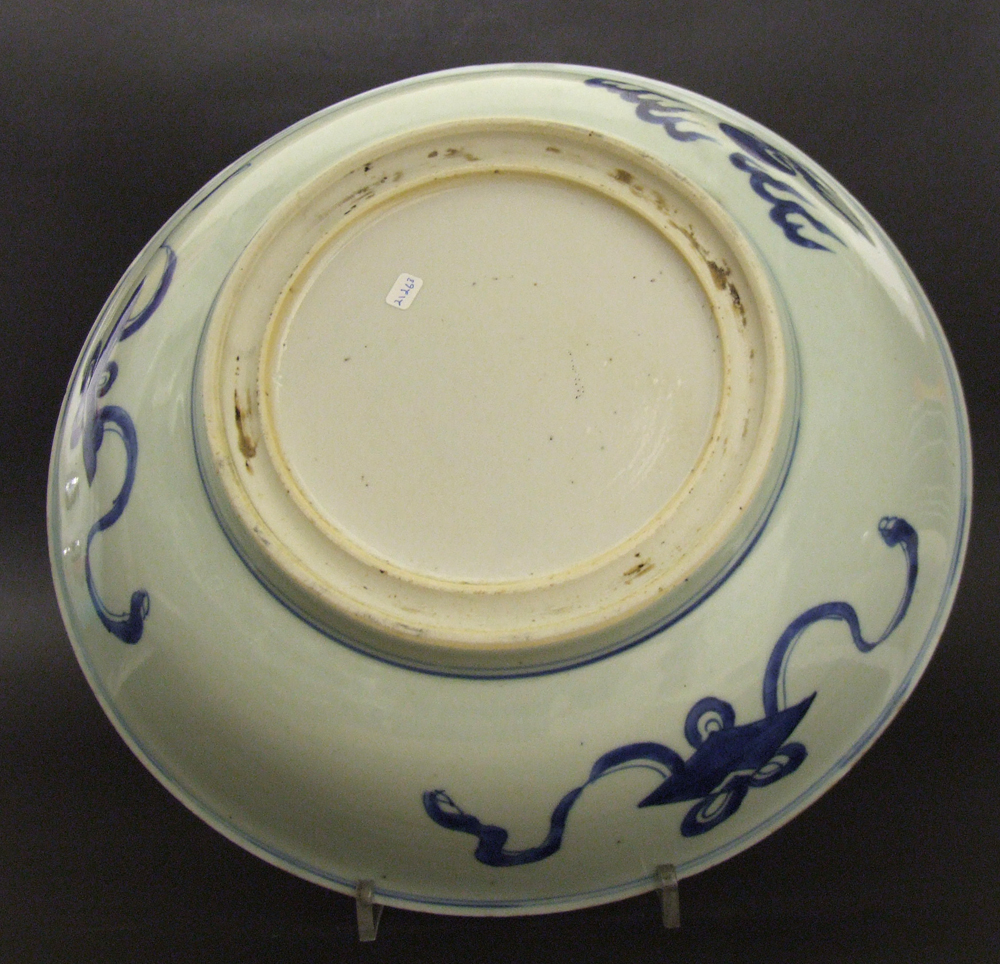
KANGXI 1662 – 1722. Transitional Porcelain
A Late Transitional Blue and White Dish, Early Kangxi Period c.1662-1674. Decorated with a Pair of Fenghuang, Chinese Phoenix Among Rocks and Flowering Tree Peony. The Base with a ‘Channel Foot’, a Type of Double Footrim with the Center Being Concave and Unglazed. The Back with Buddhist Treasures Tied with Ribbon.
SOLD
- Condition
- Shallow fritting.
- Size
- Diameter : 34 cm (13 1/4 inches)
- Provenance
- N/A
- Stock number
- 21268
Information
Fenghuang are mythological birds of East Asia that reign over all other birds. The males are called Feng and the females Huang. In modern times, however, such a distinction of gender is often no longer made and the Feng and Huang are blurred into a single feminine entity so that the bird can be paired with the Chinese dragon, which has male connotations. The Fenghuang is also called the 'August Cockerel' since it sometimes takes the place of the cockerel in the Chinese Zodiac. In the West, it is commonly referred to as the Chinese phoenix. The Fenghuang has very positive connotations. It is a symbol of high virtue and grace. The Fenghuang also symbolizes the union of yin and yang.
In ancient China, they can often be found in the decorations for weddings or royalty, along with dragons. This is because the Chinese considered the dragon and phoenix symbolic of blissful relations between husband and wife, another common yin and yang metaphor.
In some traditions it appears in good times but hides during times of trouble, while in other traditions it appeared only to mark the beginning of a new era. In China and Japan it was a symbol of the imperial house, and it represented 'fire, the sun, justice, obedience, and fidelity'.
